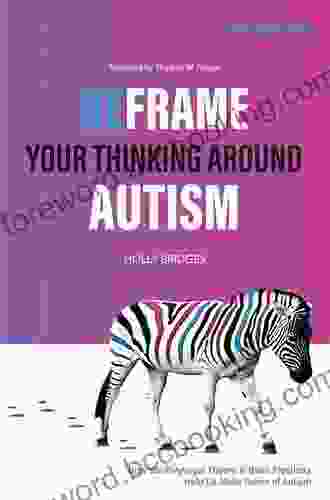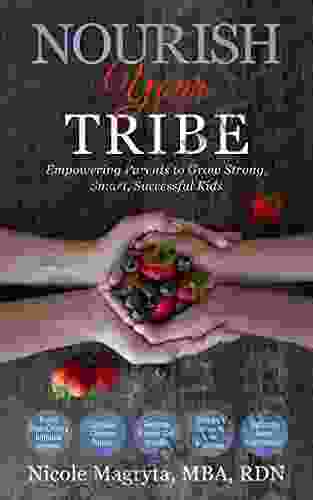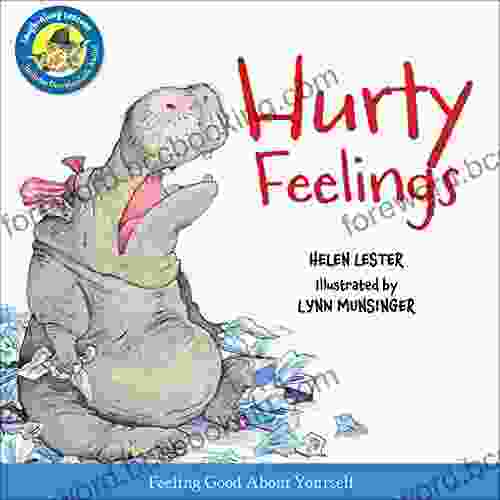Unlocking the Autism Enigma: The Polyvagal Theory and Brain Plasticity

Autism, a neurodevelopmental disFree Download that affects social interaction, communication, and behavior, has long puzzled researchers and clinicians alike. However, recent advancements in neuroscience, particularly in the realm of the polyvagal theory and brain plasticity, are shedding new light on the complexities of autism.
4.3 out of 5
| Language | : | English |
| File size | : | 1541 KB |
| Text-to-Speech | : | Enabled |
| Enhanced typesetting | : | Enabled |
| Word Wise | : | Enabled |
| Print length | : | 107 pages |
| Screen Reader | : | Supported |
The Polyvagal Theory
The polyvagal theory, proposed by renowned psychiatrist Stephen Porges, focuses on the role of the vagus nerve, a crucial component of the nervous system responsible for regulating our physiological and emotional responses. This nerve plays a vital role in our social engagement, communication, and sense of safety.
In individuals with autism, research suggests that the vagus nerve may be underdeveloped or have altered functioning. This can result in difficulties with social interaction, as the vagus nerve helps us to regulate our emotions and respond appropriately to social cues.
Brain Plasticity
Brain plasticity refers to the brain's ability to change and adapt throughout our lives. This remarkable feature allows us to learn new skills, form new memories, and modify our behavior. In the context of autism, understanding brain plasticity is crucial, as it suggests that the brains of individuals with autism can be influenced by interventions that promote neuroplasticity.
The Interplay of Polyvagal Theory and Brain Plasticity
The polyvagal theory and brain plasticity are closely intertwined. The vagus nerve, as part of the autonomic nervous system, influences the brain's plasticity by modulating the release of neurotransmitters and hormones that promote neuronal growth and development.
In individuals with autism, interventions that stimulate the vagus nerve can enhance brain plasticity, fostering improvements in social engagement, communication, and overall well-being.
Implications for Understanding and Treatment
The groundbreaking insights provided by the polyvagal theory and brain plasticity have significant implications for our understanding and treatment of autism.
- Enhanced Diagnosis: The polyvagal theory can guide clinicians in identifying individuals with autism who may benefit from specific interventions targeting the vagus nerve.
- Targeted Interventions: Interventions that stimulate the vagus nerve, such as vagus nerve stimulation (VNS) and polyvagal exercises, can promote neuroplasticity and enhance social engagement and communication skills.
- Personalized Treatment Plans: By understanding the individual's vagus nerve functioning, clinicians can tailor treatment plans that maximize the benefits of vagus nerve stimulation.
- Empowerment of Individuals and Families: The knowledge gained from the polyvagal theory and brain plasticity empowers individuals with autism and their families to take an active role in their care and support.
The convergence of the polyvagal theory and brain plasticity has revolutionized our understanding of autism. These groundbreaking concepts provide a framework for targeted interventions that harness the brain's plasticity to improve the lives of individuals with autism.
As research continues to unravel the intricate connections between the vagus nerve, brain plasticity, and autism, we can look forward to even more innovative and effective approaches to understanding and supporting individuals on the autism spectrum.
### Alt Attributes for Images:
* **Autism-brain-plasticity-polyvagal:** A diagram illustrating the connections between the polyvagal theory, brain plasticity, and autism. * **Vagus-nerve-stimulation:** A depiction of vagus nerve stimulation, a non-invasive intervention that activates the vagus nerve. * **Polyvagal-exercises-autism:** A photograph of individuals engaging in polyvagal exercises, which aim to stimulate the vagus nerve. * **Happy-autistic-child-family:** A heartwarming image of an autistic child smiling and interacting with their family, showcasing the positive outcomes of early intervention and support.
4.3 out of 5
| Language | : | English |
| File size | : | 1541 KB |
| Text-to-Speech | : | Enabled |
| Enhanced typesetting | : | Enabled |
| Word Wise | : | Enabled |
| Print length | : | 107 pages |
| Screen Reader | : | Supported |
Do you want to contribute by writing guest posts on this blog?
Please contact us and send us a resume of previous articles that you have written.
 Book
Book Novel
Novel Page
Page Chapter
Chapter Text
Text Story
Story Genre
Genre Reader
Reader Library
Library Paperback
Paperback E-book
E-book Magazine
Magazine Newspaper
Newspaper Paragraph
Paragraph Sentence
Sentence Bookmark
Bookmark Shelf
Shelf Glossary
Glossary Bibliography
Bibliography Foreword
Foreword Preface
Preface Synopsis
Synopsis Annotation
Annotation Footnote
Footnote Manuscript
Manuscript Scroll
Scroll Codex
Codex Tome
Tome Bestseller
Bestseller Classics
Classics Library card
Library card Narrative
Narrative Biography
Biography Autobiography
Autobiography Memoir
Memoir Reference
Reference Encyclopedia
Encyclopedia Howard Axelrod
Howard Axelrod Herbert B Asher
Herbert B Asher Herschel Knapp
Herschel Knapp Imogen Barnacle
Imogen Barnacle Kyle T Westra
Kyle T Westra Heather Kassner
Heather Kassner Segun Adebajo
Segun Adebajo Harris M Berger
Harris M Berger Robert Scott
Robert Scott Wendy Lyons Sunshine
Wendy Lyons Sunshine Holly Hatam
Holly Hatam Heather Boushey
Heather Boushey Hato Moa
Hato Moa Howard Eiland
Howard Eiland J F Fox
J F Fox Genius Reads
Genius Reads Virginia M Axline
Virginia M Axline Heather Webber
Heather Webber Truman Everts
Truman Everts Harry Robinson
Harry Robinson
Light bulbAdvertise smarter! Our strategic ad space ensures maximum exposure. Reserve your spot today!

 Tyler NelsonUnleash the Beasts: A Literary Odyssey into The Unicorn Emergency Beasts of...
Tyler NelsonUnleash the Beasts: A Literary Odyssey into The Unicorn Emergency Beasts of...
 Gary ReedDiscover the Secrets of Natural Beauty: DIY Skincare, Haircare, and Body Care...
Gary ReedDiscover the Secrets of Natural Beauty: DIY Skincare, Haircare, and Body Care... Kirk HayesFollow ·2.5k
Kirk HayesFollow ·2.5k David MitchellFollow ·15.1k
David MitchellFollow ·15.1k Shane BlairFollow ·7.9k
Shane BlairFollow ·7.9k Leo MitchellFollow ·13.4k
Leo MitchellFollow ·13.4k Christopher WoodsFollow ·17.8k
Christopher WoodsFollow ·17.8k Todd TurnerFollow ·6.5k
Todd TurnerFollow ·6.5k Anthony BurgessFollow ·7.6k
Anthony BurgessFollow ·7.6k Percy Bysshe ShelleyFollow ·17.4k
Percy Bysshe ShelleyFollow ·17.4k

 Fabian Mitchell
Fabian MitchellUnleash the Adventure: Family Fun in the Black Hills
Nestled amidst the rolling hills...
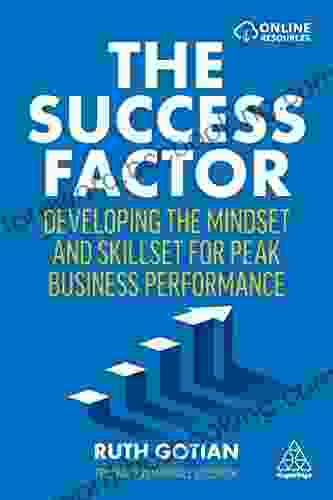
 Alfred Ross
Alfred RossUnleashing Peak Business Performance: A Journey of...
In today's rapidly evolving business...

 Fernando Bell
Fernando BellEmbrace the Prophetic Voice of Howard Zinn: A Journey...
As we navigate the complexities of our...
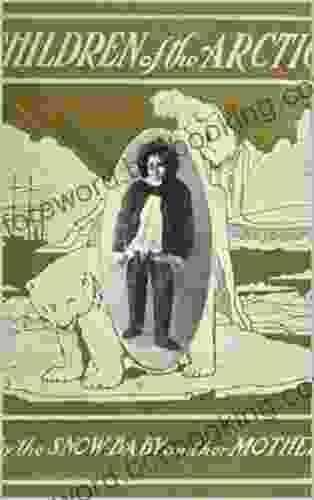
 Jonathan Franzen
Jonathan FranzenChildren of the Arctic: A Literary Expedition to the...
In the annals of...

 Branson Carter
Branson CarterYou Can Be Neutral on a Moving Train: A Transformative...
Welcome, dear reader,...
4.3 out of 5
| Language | : | English |
| File size | : | 1541 KB |
| Text-to-Speech | : | Enabled |
| Enhanced typesetting | : | Enabled |
| Word Wise | : | Enabled |
| Print length | : | 107 pages |
| Screen Reader | : | Supported |


